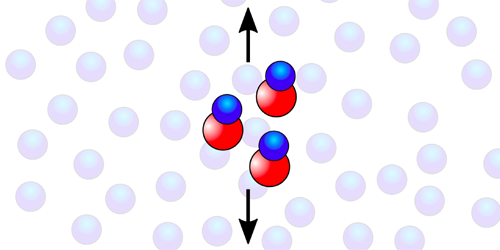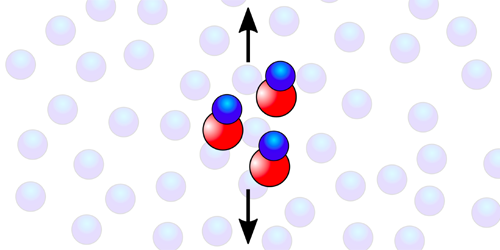Collisions Key in Creating a Quantum Degenerate Gas from Molecules
Cool a gas to a low enough temperature and it enters the so-called quantum degenerate regime, where quantum behaviors dominate. Degenerate gases consisting of fermions have long been made using fermionic atoms, but doing the same with molecules is trickier due to their complex energy structures. Last year, a team at JILA in Colorado made a degenerate Fermi gas from potassium–rubidium molecules. Now the same team explains the mechanisms that allowed them to get their gas so cold. The work provides a pathway to cooling molecular gases to even lower temperatures and deeper degeneracies. These gases could be used to study chemical dynamics in a fully quantum regime and to perform fundamental tests of quantum physics.
To make a degenerate molecular Fermi gas, William Tobias, Kyle Matsuda, and their colleagues prepared separate ultracold gases of rubidium (Rb) and potassium (K). They then combined the atoms via a two-step process: First, they swept a magnetic field across the gases, forming loosely bound pairs of Rb and K atoms. Second, they applied lasers to transfer the loosely bound molecules to a deeply bound ground state.
The team found that the density and temperature of the initial K gas were key in determining the molecular gas’s final temperature. In gases that reached the quantum degenerate regime, the K density was sufficient for the molecules and residual K atoms to collide on average about 6 times, with each collision cooling the molecules further.
The team also observed a feature of Fermi gases known as antibunching, where the molecules remain separated in space and momentum. The measurement is a first for molecules and provides an alternative means to measure the system’s temperature.
This research is published in Physical Review Letters.
–Katherine Wright
Katherine Wright is a Senior Editor for Physics.





